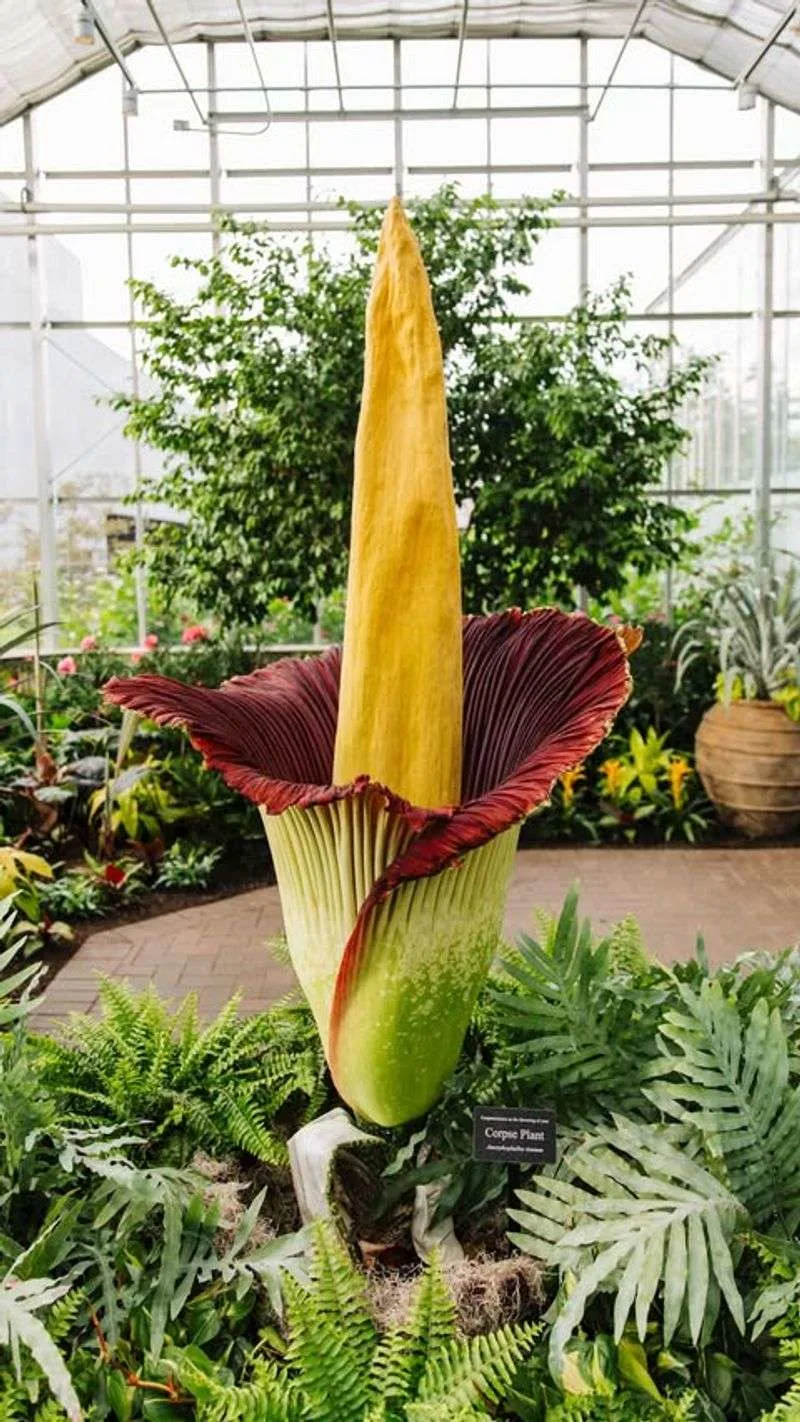Nature has a way of surprising us, but some plants take that surprise to a whole new level. From flowers that mimic animals to leaves that look like alien creations, these bizarre plants could easily be mistaken for props from a sci-fi movie.
Yet, they’re completely real—and growing right here on Earth.
If you’re someone who loves the weird and wonderful side of nature, these 11 plants are guaranteed to blow your mind.
They’re strange, fascinating, and a reminder that our planet still has plenty of mysteries waiting to be discovered. Get ready to see the world of plants like never before.
Corpse Flower

This plant is notorious for its pungent odor, reminiscent of rotten flesh, which ironically attracts pollinators. Despite its unpleasant scent, the sheer size and appearance of the corpse flower make it a spectacle to behold.
Its towering central spadix is enveloped by large, umbrella-like petals.
The deep burgundy hue adds to its alien-like allure. Found in the rainforests of Indonesia, it blooms rarely, making each occasion a significant event.
The rarity and bizarre characteristics of this plant have fascinated botanists and nature lovers alike.
Venus Flytrap

Carnivorous in nature, this plant has captivated many with its ability to catch and digest insects. The unique trap-like leaves snap shut with surprising speed when triggered by unsuspecting prey.
Its tooth-like structures add to the fearsome appearance, defying the typical docility of plants. Originally from the wetlands of the Carolinas, the Venus flytrap thrives in harsh conditions.
Its adaptability and distinct hunting mechanism make it a true marvel in the plant kingdom.
Lithops

Often referred to as “living stones,” lithops blend seamlessly with their rocky surroundings in the deserts of Southern Africa. Their camouflaging ability protects them from predators and harsh climatic conditions.
Each lithop is small and stone-like, with a split at the top where new growth emerges. This unique adaptation not only disguises them but also aids in water conservation—a vital trait for desert survival.
Rafflesia

Known for producing the world’s largest bloom, Rafflesia challenges conventional floral aesthetics. Its vibrant red petals, dotted with white spots, look nothing like your typical garden flower.
Found on the forest floors of Southeast Asia, it releases a strong odor of decaying flesh to attract carrion flies for pollination. This parasitic plant lacks leaves, stems, and roots, relying entirely on its host for nutrients.
Welwitschia

Native to the Namib Desert, this prehistoric plant defies typical descriptions with its bizarre growth pattern. It produces only two leaves throughout its lifetime, which continuously grow, becoming twisted and frayed over time.
Living for over a thousand years, Welwitschia has adapted to one of the harshest climates on Earth. Its resilience and ability to survive with minimal resources captivate botanists and nature enthusiasts.
Hydnora Africana

Unlike most plants, Hydnora Africana spends its life underground, only surfacing to bloom. The unusual appearance, resembling a gaping mouth, is both fascinating and eerie.
Found in Southern Africa, it is a parasitic plant, relying on its host for sustenance. Its fleshy petals emit a strong odor, attracting dung beetles for pollination.
The plant’s unique life cycle and appearance make it a subject of intrigue.
Dragon’s Blood Tree

Named for its blood-red sap, this tree looks as if it belongs on a different planet. Its unique umbrella shape and dense canopy are well adapted to the arid conditions of Socotra Island.
The sap is highly valued for its medicinal properties and vibrant dye. The tree’s striking silhouette against the barren landscape creates a dramatic visual, enhancing its otherworldly presence.
Pitcher Plant

These carnivorous wonders have evolved to trap and digest insects within their pitcher-shaped leaves. The vibrant coloration and nectar lure unsuspecting prey into a watery grave inside the plant.
Native to various habitats, including the rainforests of Borneo, pitcher plants have adapted to nutrient-poor environments. Their ingenious design and survival tactics are both alarming and awe-inspiring.
Ghost Plant (Monotropa uniflora)

Devoid of chlorophyll, the ghost plant defies the typical green plant aesthetic. Its translucent white color results from its parasitic nature, drawing nutrients from fungi in the soil.
Found in shaded, forested areas, it thrives in dark, nutrient-rich environments. The ghostly appearance and unusual lifestyle make it a unique and mysterious member of the plant world.
Sensitive Plant (Mimosa pudica)

The sensitive plant is famous for its rapid response to touch, folding its leaves inwards when disturbed. This defensive mechanism fascinates botanists and casual observers alike.
Native to tropical regions, it thrives in warm climates, where its touch-responsive behavior serves to deter herbivores. The plant’s interactive nature and delicate appearance add to its charm.
Sea Urchin Cactus (Astrophytum asterias)

Resembling a sea urchin, this spherical cactus boasts symmetrical ridges and a striking central flower. Its spiny surface not only deters predators but also minimizes water loss.
Found in the arid deserts of Mexico, it thrives in sandy, well-drained soils. The cactus’s unique appearance and adaptive features make it a popular choice among succulent enthusiasts.

